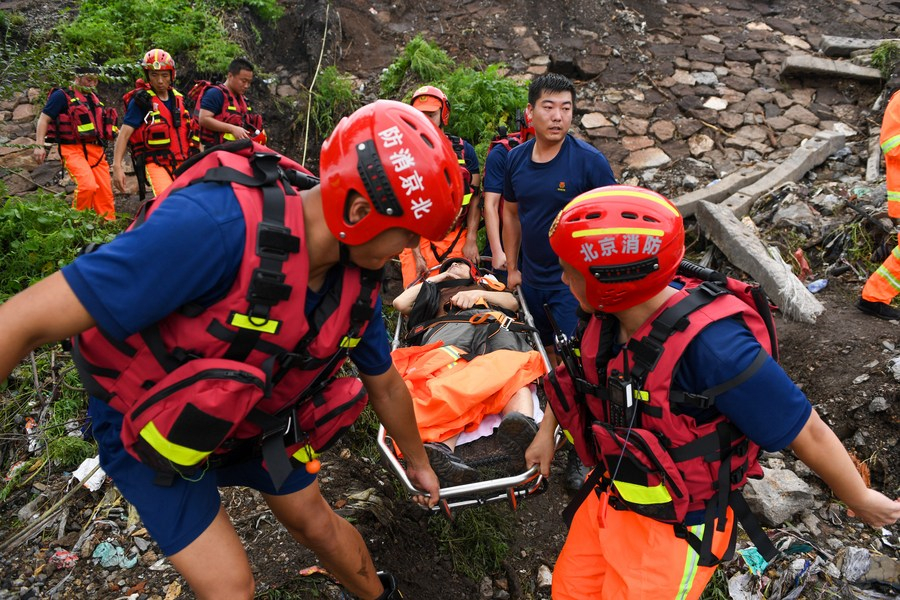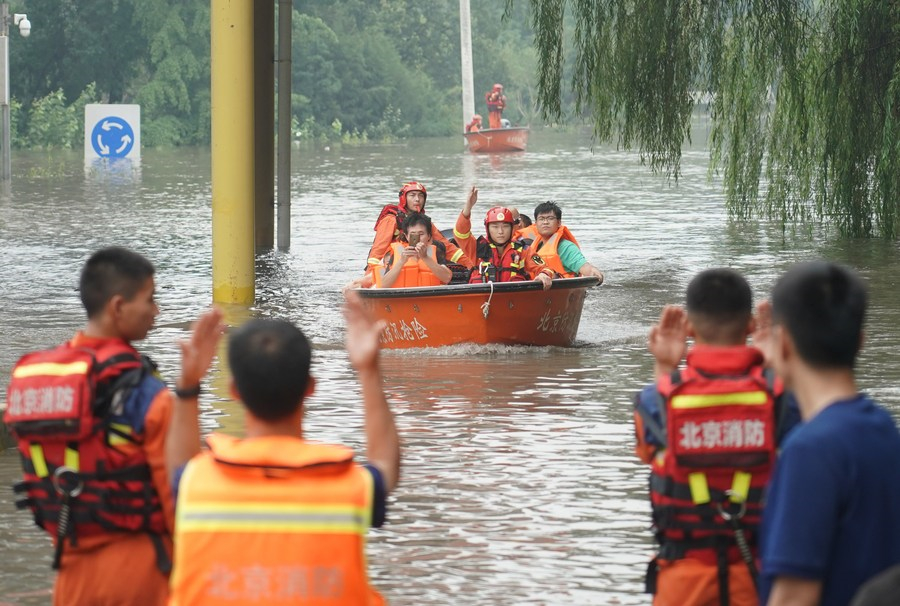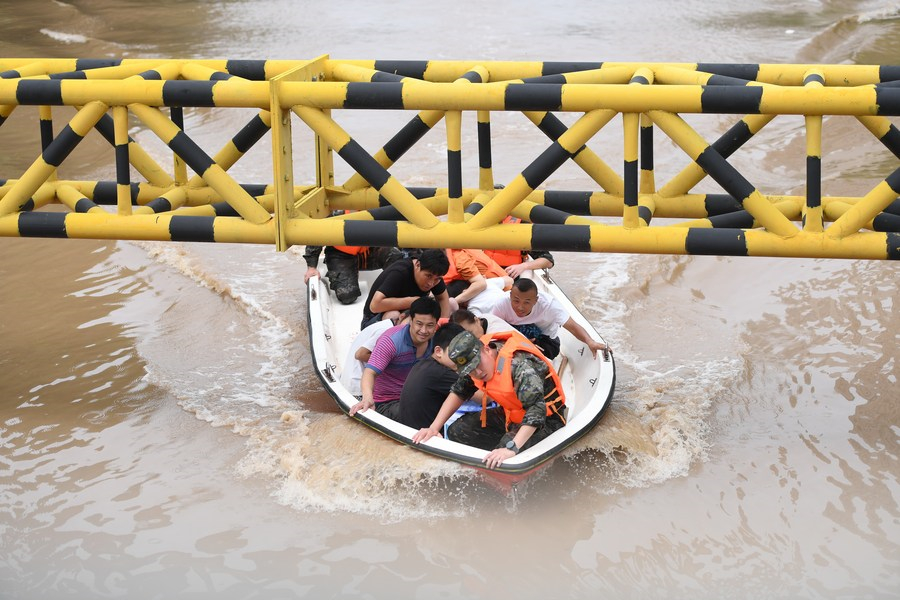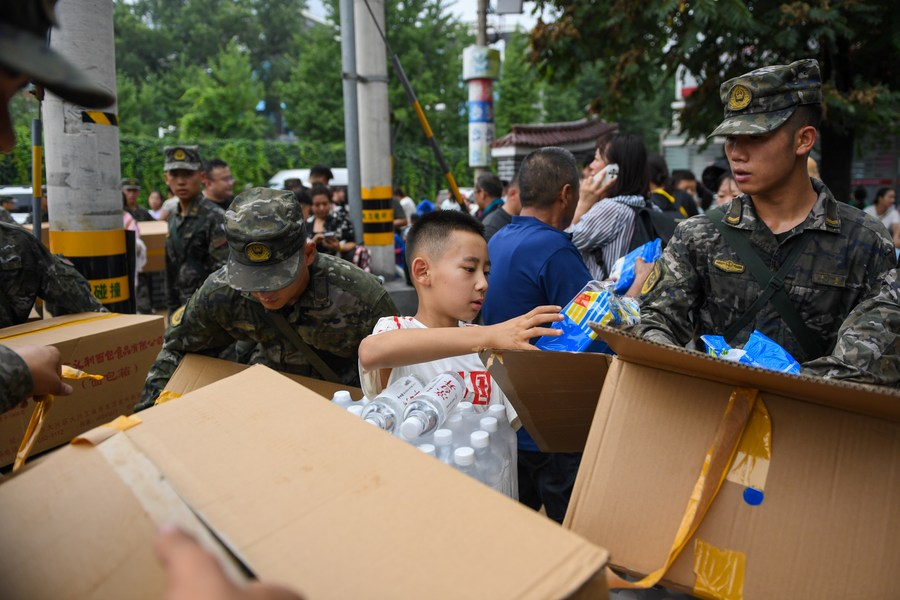China speeds up post-disaster resettlement in Beijing-Tianjin-Hebei region
* Over the past few days, Beijing has seen the heaviest rainfall since records began 140 years ago.
* The torrential rains and massive floods have left 11 dead in Beijing and 9 dead in Hebei Province.
* Authorities are mobilizing an all-out effort to safeguard the people from the impact of disasters.
BEIJING -- In response to the torrential rainstorms and floods that have wreaked havoc in Beijing and its surrounding regions, authorities are mobilizing an all-out effort to safeguard the people from the impact of disasters.
Over the past few days, Beijing has seen the heaviest rainfall since records began 140 years ago. It logged 744.8 millimeters of rain, the maximum amount of precipitation recorded during the rainstorm, between 8 p.m. Saturday and 7 a.m. Wednesday at a suburban reservoir.
The torrential rains brought by a typhoon and the massive floods triggered by the rains have left 11 dead in Beijing and 9 dead in neighboring Hebei Province.
Statistics released on Tuesday showed that over 44,000 people in Beijing were affected by the disasters and 127,000 people had been evacuated. In Hebei, over 1.2 million people had been evacuated as of Wednesday.

Rescuers transfer an injured villager in Shuiyuzui Village in flood-hit Mentougou District, Beijing, capital of China, Aug. 1, 2023. [Xinhua/Ju Huanzong]
In the port city of Tianjin, local authorities have evacuated about 66,000 people and taken measures to brace for flooding from upstream rivers.
Mentougou and Fangshan districts in southern and western Beijing were the hardest-hit areas in the national capital. Floods have cut off roads, washed away vehicles, and damaged a bridge near the Lugou Bridge.
More than 2,000 members of the armed police force in Beijing have been dispatched to a township in Fangshan to assist with rescue and relief efforts. Amidst the relentless downpour, they were seen diligently wielding shovels and operating heavy equipment like bulldozers and loaders to construct a protective dam in the low areas of the riverbed, effectively mitigating the threat of flooding.
On Tuesday, police helicopters delivered emergency relief supplies such as food, medicine and water to affected areas of Beijing.
Earlier on Wednesday noon, the police helicopter dispatched by the Beijing municipal government rescued six trapped and injured people in Changping District.
In Mentougou, an elementary school has been converted to a temporary relief camp, providing shelters for over 100 residents evacuated from the floods.
Li Xuemei, a community worker and head of the relief camp, said local authorities had allocated separate rooms for pregnant women and parents with babies.
"We have kept records of everyone's information, and provided them with food and health care," she said. "Electricity supply and telecommunication remain unaffected."
"We feel reassured after the evacuation," said Peng Zengying, as she fed an egg to her one-year-old baby. "A doctor came to check on the baby. And the room is equipped with a kettle, which makes it convenient for preparing powdered milk."
On Wednesday morning, Beijing lifted the red alert for flood as the water flow in major rivers has gone below the warning mark.

People take a rescue boat to a transshipment point in Fangshan District of Beijing, capital of China, Aug. 2, 2023. [Xinhua/Ren Chao]
The city of Zhuozhou is one of the worst-affected areas in Hebei. As of 10 a.m. Tuesday, the floods have affected a total area of 225.38 square kilometers, impacting the lives of 133,913 people.
Local authorities set up 28 emergency rescue teams with a total of 8,755 people to help with the rescue and relief efforts. They worked in collaboration with soldiers stationed there and professional rescue teams.
More than 2,000 relocated people are currently taking shelter at a settlement site in a vocational school in Zhuozhou. In the hallways of the school, some villagers were calling their families to reassure them of their safety, while others were charging the phones using backup batteries.
"I've never seen such massive floods," said 42-year-old Sun Yanhong, who, together with four family members, was among the first group of people relocated from her village. "I feel much assured here. The safety of the family is the most important thing."

Rescuers transfer flood-trapped people in Zhuozhou, north China's Hebei Province, Aug. 2, 2023. [Xinhua/Mu Yu]
Over the past few days, central and local authorities have mobilized various resources at their disposal to accelerate disaster relief and reconstruction.
The Organization Department of the Communist Party of China Central Committee has allocated 44 million yuan (about 6.17 million U.S. dollars) in funds to assist with flood control and disaster relief work in Beijing, Hebei and Tianjin.
The department stressed the swift allocation of the fund to the primary level, aiming to support frontline workers and individuals severely affected by the floods, among others.

Soldiers distribute food and water to passengers of Train K396 in Miaofengshan Town of Mentougou District, Beijing, capital of China, Aug. 2, 2023. [Xinhua/Ju Huanzong]
The Chinese government has earmarked 100 million yuan to support post-disaster reconstruction in Beijing and Hebei, the National Development and Reform Commission said on Wednesday.
The funds from the central budget will be used to support the reconstruction of infrastructure and public service facilities in areas that have been hit hard by rainstorms and floods.
In Hebei, the provincial transportation department has dispatched more than 26,000 emergency personnel to help with the relocation of the affected people and the transportation of supplies. As of Wednesday, 512 road sections that were previously damaged by flooding had reopened.
Video reporters: Yang Shujun, Xia Zilin, Yue Wentin, Liu Runzhi; Video editors: Zhang Qiru, Zhao Xiaoqing, Hui Peipei, Ma Ruxuan, Wang Han
























